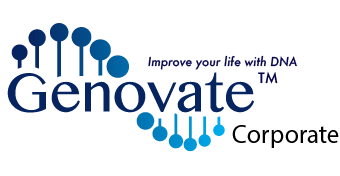DNA Maternal Ancestry Test
This maternal ancestry DNA test sequences your maternally inherited mitochondrial DNA (mtDNA). This allows you to trace the ancestry of your direct maternal lineage (your mother’s, mother’s, mother’s…maternal lineage). The mtDNA contains three regions: HVR1, HVR2, and Coding. Testing the HVR1 and HVR2 regions will allow you to make use of all of the search and analysis features of the database. Testing all three regions of the mtDNA is required to confirm your mtDNA haplogroup and subclade.
Both males and females have mtDNA, so both genders can take the mtDNA test to trace their maternal ancestry. However, only females will pass their mtDNA down to the next generation.
Trace the ancestry of your direct maternal lineage to:
- Define your maternal ethnic background
- Understand your maternal origins
- Search a global database for long-lost relatives on your maternal line
- Compare your mtDNA against famous people throughout history, including famous and infamous individuals, royalty, outlaws, world leaders, poets, and more
- DNA Reunion Database – Search for long lost family lines. Ideal for genealogists looking to expand their family tree and confirm or refute family legends, individuals looking for their biological parents and family members separated by adoption or other reasons (e.g. war).
- Indigenous DNA Database – Determine which indigenous groups are most similar to your DNA type.
- DNA Haplogroups Database – Trace you ancestry back over 100,000 years to its ancient roots in Africa.
- Famous DNA Database – Compare your DNA to famous or notable people in history.
What is mtDNA?
Mitochondrial DNA (mtDNA) is the circular DNA which is found in the mitochondria of human cells. Each cell can contain several mitochondria and each mitochondrion contains dozens of copies of the 16,569 base pairs of mtDNA so in every cell there can be thousands of copies of mtDNA. This differs from only two copies per cell of the linear and much larger nuclear genome of 3.3 billion base pairs, which includes the autosomal and sex chromosomes. Each individual inherits mtDNA from only their mother, hence there is no recombination (mixing) of the mtDNA from generation to generation. This ensures that mtDNA essentially remains unchanged through the maternal line, providing an incredibly useful way to trace maternal ancestry.
What is mtDNA sequencing?
The circular mitochondrial genome has three regions – two small hypervariable (HVR) regions and a large coding region. Most of the variation in the mtDNA occurs in the non-coding HVR regions, as this variation does not affect the function of any proteins etc. The mtDNA sequencing available here can sequence just the HVR1 region, both hypervariable regions (HVR1 and HVR2) or the complete mitochondrial genome (HVR1, HVR2 and the coding region). If two individuals have a perfect match at their HVR1 and HVR2 regions, further comparison of the much larger coding region can provide a higher stringency comparison and further resolution. The coding region covers the remainder of the mitochondrial genome and the complete mitochondrial genome is 16,569 base pairs.
Methods and analysis of mtDNA sequencing:
The mtDNA sequencing analysis uses a technique called Sanger sequencing to determine the DNA sequence in the specified region of the mtDNA. The entire DNA sequence for each region tested is provided to you in your mtDNA test report. If you choose to test all thee regions (HVR1, HVR2 and coding region), you will receive a reading on all 16,569 base pairs of your mtDNA. If only one or both hypervariable regions are sequenced, a shorter reading will be provided. Your mtDNA sequencing results are also compared to a reference sequence called “rCRS” (revised Cambridge Reference Sequence) and all of the positions within your mtDNA which differ from rCRS are listed in your report.
Your unique mtDNA sequence result is known as your mtDNA profile. Individuals share the same mtDNA profile if their mtDNA sequences are an exact match to each other. Since mtDNA is passed down from mother to child along the direct maternal lineage, individuals who have descended from the same maternal lineage are expected to have exactly the same or very similar mtDNA profiles. If two individuals have different mtDNA profiles, it would conclusively confirm that they did not descend from the same maternal lineage, regardless of family legend.
Customers can select which mtDNA region or regions that they would like to have analyzed.
- Standard Test: HVR1 sequence. This is often all that is required to achieve an adequate resolution.
- Advanced Test: HVR1 + HVR2 sequence.
- Premium Test: The full mtDNA genome sequence (HVR1 + HVR2 + Coding Region). This provides the highest resolution.
- Upgrade Options: A cost-efficient upgrade option is available, where customers can initially select just the Standard Test. If this region does not provide a high enough resolution, there is an option to upgrade to the Advanced Test or Premium Test.
 Would you like to add this test to your Reseller account?
Would you like to add this test to your Reseller account?
Not a Reseller yet?
Just require this test? Click here to return to the Genovate Consumer site to order this test directly
